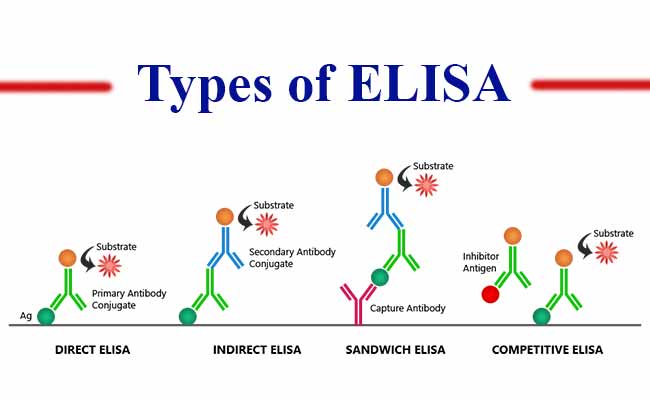The enzyme-linked immunosorbent assay (ELISA) was first described by Engvall and Perlmann (1971), and used initially for the detection of immunoglobulin G. ELISAs are used across several areas of biomedical research and discovery as well as for diagnostic purposes.
As its widespread use suggests, there are many ways to perform an ELISA, and determining who is right for your research question will depend on several factors, including the sensitivity desired or what was detected. You can also buy bdnf elisa kit from various online sources.
Here we describe the different types of ELISA and concentrate on the advantages and disadvantages of individual ELISA methods as well as on what to consider before choosing an ELISA technique.

Image Source: Google
What types of ELISA are there?
There are four ELISA techniques that can be applied to your research. Selecting the appropriate antibody will depend on the available antibodies, the results you need, and the complexity of your sample. ELISA techniques include direct ELISA, indirect ELISA, sandwich ELISA, and competition or inhibition ELISA.
Direct ELISA
Figure 1 shows a typical direct ELISA setup. Antigens are usually immobilized in multi-well plates. The antigen is then detected by antibodies that are directly conjugated with enzymes such as horseradish peroxidase (HRP).
Indirect ELISA
With this ELISA technique, the antigen, which is immobilized on a multi-well plate, is detected in two steps. First, an unlabeled (usually monoclonal) primary antibody binds to a specific antigen. Second, enzyme-conjugated secondary antibodies (usually polyclonal) that target the host species.
ELISA sandwich
Sandwich ELISA requires the use of paired antibody pairs (capture and detect antibodies). Therefore, each antibody is specific for a distinct and non-overlapping region or epitope of the antigen. It is important that matched antibody pairs are specifically tested in the ELISA to ensure that they recognize different epitopes for accurate results.
